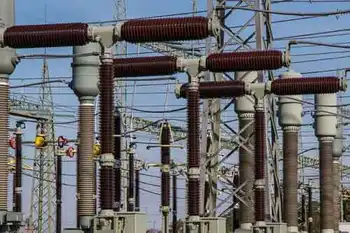Is it time to press “reset” on nuclear?
By National Post
Electrical Testing & Commissioning of Power Systems
Our customized live online or in‑person group training can be delivered to your staff at your location.

- Live Online
- 12 hours Instructor-led
- Group Training Available
The world's relationship with nuclear has long been unstable, beginning in the 1960s when governments first embraced the energy source, then declining in the 1980s after projects grew grossly over budget and two major nuclear disasters rocked confidence. But the quest to quash climate change coupled with a hunger for energy security, have helped resuscitate nuclear power. The industry built better, more reliable reactors, and governments gave nuclear a starring role in their long-term energy plans.
Recent events, however, have put nuclear back on the defensive, bringing into question the future of the industry in Canada and beyond.
Today's debate pits proponents, who laud the technology for its ability to supply baseload demand, against those who tout renewable energies as both enviromentally friendly and economically responsible.
Onlookers from both camps are keeping a close eye on Ontario after it recently suspended plans for two nuclear reactors at its Darlington station, citing the reported $26-billion cost and the murky outlook of Atomic Energy of Canada Ltd., the arms-length federal body which produces CANDU reactors and whose bid was the only proposal to meet the province's terms.
The New York Times recently called the Darlington price tag and the subsequent delay a setback for AECL, a company that also faced criticism earlier this year after it was forced to shut down its Chalk River research reactor because of safety concerns.
Indeed, the Ontario situation is being watched by many — from the Saskatchewan government, to London's Daily Telegraph, to a high-profile report by an American economist — read by some as a cautionary tale that paints nuclear energy as more costly and less feasible than initially anticipated.
"The rest of the world has been looking at what we do on our own turf," said Neil Alexander, president of the Organization of CANDU industries, which represents more than 100 companies in the nuclear industry in Canada.
Globally, half of the 45 reactors currently under construction have encountered construction delays and many are over-budget, according to an analysis recently tabled to the German government. These delays and hefty cost overruns, together with the recession's decreased energy demand, have prompted a closer look at what was just years ago considered the world's favourite energy source.
The Point Lepreau station in New Brunswick — Atlantic Canada's only nuclear facility and the first CANDU-6 reactor to undergo a complete rebuild — has been under refurbishment since March 2008 and is now seven months behind schedule. The province is on the hook for roughly $150-million in additional replacement fuel costs, and will rack up another $20 million for every month the project is delayed.
In Finland, a massive power plant touted as the poster child of the nuclear renaissance has been under construction for four years. While the reactor was scheduled for completion this summer, Areva, the French company building it and one of three bidders on Ontario's Darlington project, is now unwilling to predict when it will go online. The reactor, slated to be the biggest in the world with an excavation site the size of 55 football fields, is today roughly 50% over budget.
Russia announced that it will rein in construction of new reactors because of the financial downturn and a decline in electricity consumption. Though the government planned to build two units each year over the next several years, it has "corrected" that plan by halving production to one unit per year.
Officials in the U.S. announced in April it would suspend construction of a $6-billion nuclear project in Missouri. Two months later, the country's largest nuclear power generator, Exelon, said it was "ramping back" plans to build a proposed nuclear plant in Texas.
"The industry has predicted that new cheap reactors, in a world searching for silver-bullet solutions to climate change, would revive an industry moribund since Chernobyl," said Shawn-Patrick Stensil, spokesman for Greenpeace Canada, referring to the 1986 nuclear disaster that left an entire Ukraine city uninhabitable. "Ontario's delay shows the industry is failing to deliver on cheap reactors."
Of course, rethinking nuclear would be no small thing.
Since the first station went online in Russia in 1954, another 440 nuclear reactors have popped up in 32 countries, the bulk of which are scattered across the United States, France, Japan and Russia.
Nuclear power generated 16% of the world's electricity in 2006, making it the fourth-largest source of electricity worldwide behind coal, hydro and gas.
According to the International Atomic Energy Agency (IAEA), world demand for uranium — the atoms of which are split during the production of nuclear energy — has at times outrun supply, so much so that decomissioned Russian warheads today satiate much of the world's appetite for uranium.
It is significant, then, that the global industry appears very much at a fork in the road, with two camps vying to steer its course.
In one corner is the nuclear lobby, which maintains that nuclear energy — albeit expensive, with costs rising — is the only reliable source of baseload supply and is far more environmentally friendly than its coal counterpart. They argue that green technologies, however noble in their eco-friendliness, are immature at best, weather-reliant, and pricey. Though wind is on the cheaper end at roughly 8 to 15 cents per kilowatt hour, solar is pegged closer to 40 cents per kilowatt hour.
Among the pro-nuclear governments are Sweden and Italy, both of which recently overturned decades-old prohibitions on new power stations. Spain is likewise working to reverse a policy that phases out nuclear. China and India are going ahead with ambitious building programs, while the United Arab Emirates is fielding bids from South Korea, France and Japan to build a (US)$40-billion fleet due to be commissioned starting 2017.
Mr. Alexander, the CANDU president, argues that governments like these are wise to look beyond today's energy lull. "I would be very surprised if demand didn't pick up after the economy turns around," he said. "We need to make decisions today so that we have options 10 years from now."
Nuclear opponents, meanwhile, claim that wind, solar, and cogeneration are less expensive than nuclear in the long run, can be turned up or down depending on demand, and can help tackle climate change.
Indeed, for nuclear power to have a significant impact on reducing greenhouse gases, an average of a dozen reactors would have to be constructed worldwide each year until 2030, according to the Nuclear Energy Agency at the Organization for Economic Development. Currently, however, there are not even enough reactors under construction to replace those slated for retirement.
Mr. Stensil said governments once wooed by the idea that nuclear is cost-effective, are today forced to "face the bills" — bills that, by some estimates, are 130% higher than they were in 2000. The delays and suspensions that inevitably ensue, are more proof that the nuclear renaissance is "dead on arrival," he said.
Not so, said Mr. Alexander, who argues that nuclear will work through its challenges and, when it does, Canada should be there to reap the benefits. "Every day we delay, we are prejudicing our ability to be at the forefront of the nuclear renaissance," he said.
But whether a nuclear revival is, in fact, on the horizon is a prediction that is today hotly debated around the world.
Two weeks before the Darlington project was put on hold, economist Mark Cooper of the Institute for Energy and the Environment at Vermont Law School released a report stating that recent cost projections are "four times as high as the initial nuclear renaissance projections." Utilities, the report said, are embarking on "an ominous repeat of history."
Nuclear's difficulties began in the 1970s, a decade that saw costs balloon and was capped by 1979's Three Mile Island — the most significant accident in the history of commercial nuclear-power generation in America.
After the devastation at Chernobyl, nuclear power was poised for extinction: Two-thirds of all nuclear plants ordered after January 1970 were eventually cancelled.
Whether this decade will be marred by cancellations is yet to be seen. In the meantime, governments appear more cautious than ever.
Shortly after the announcement of the Darlington delay, Saskatchewan's Energy and Resources Minister Bill Boyd — who is considering a proposal for a nuclear reactor in Northern Saskatchewan — said Ontario's situation adds "additional questions about the whole area of nuclear power."
And just as governments, think-tanks, and the media are keeping an eye on the future of nuclear, so too are the markets.
On June 25, U.S. credit-ratings firm Moody's Investors Service reported it may take a more negative view of power companies looking to build new nuclear powerplants, pointing to the risk incurred by developers. Moreover, in 2008, Moody's noted that traditional technologies have fixed designs whose costs are rapidly increasing.
Renewable technologies, it said, are still undergoing advancements in terms of energy-conversion efficiency and cost reductions.
Said Energy Probe's Lawrence Solomon: "Better late than never to bail out," he said. "This is a question of throwing more good money after bad."











